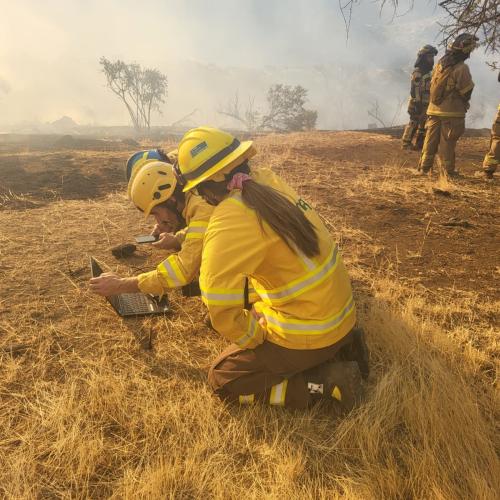
Science and practice: Why collaboration is key in Extreme Wildfire Events
By Brian Verhoeven, Wildfire Researcher, Netherlands Institute for Public Safety
Extreme Wildfire Events (EWEs) are no longer anomalies; they are rapidly becoming defining features of the 21st century. Longer fire seasons, record-breaking heatwaves and extreme fire behaviour are challenging communities and fire services worldwide. In this context, an effective but safe response requires more than firefighting expertise or scientific modelling alone. It requires a tight collaboration between science and practice: researchers generating new knowledge about (extreme) fire behaviour, and practitioners, especially in fire services, applying, testing, and refining that knowledge in the field. Stakeholder engagement is thus key in fire science, also when we work on improving our understanding and increasing the predictability of EWEs.
Why science needs practice
Science can only reach its full potential when it is tested against the realities of fire operations. Without the perspective of fire services, research has a risk of drifting toward abstract models with limited operational applicability. For example, high-resolution fire spread simulations, coupled with atmospheric models, could potentially produce precise predictions, but if they require hours to run or input that is unavailable to fire services, they cannot support real-time decision-making.
Engagement with practitioners means finding relevance. Firefighters can, for example, articulate the types of decisions they face in the field – where to deploy units, when to call for evacuations, how to prioritise resources or how to maintain safety during the operations – and highlight relevant information for science. For example, they can provide scientists with specific topics that need focus (such as EWEs, which is how EWEDopens in new tab was formed as well), or gather data for scientists because they have the unique ability of (safely) getting close to the fire.
Why practice needs science
The other side of the coin is just as important. No matter how much experience firefighters can have, today’s fires do not allow to solely trust in experience or tradition anymore, while we are seeing increasingly frequent extreme wildfires. Thus, science is essential in bringing the operations new insights and tools that allow firefighters to be able to account for extreme fire behaviour before it occurs, preventing unwanted surprises. Examples of how science is needed by practitioners:
Building bridges that work
The challenge is that science and practice don’t always line up easily. Scientists often work on multi-year timelines, while practitioners deal with decisions that need answers within minutes or hours. At the same time, tools coming out of research don’t always translate easily into the field, where time, bandwidth and attention could be limited.
However, there are ways to bridge this gap:
A shared mission
At the end of the day, both scientists and practitioners share the same mission. Both scientists and practitioners bring their own equally relevant strengths when working together. When those strengths are combined, an advantage is gained that will help in creating new knowledge and tools that are necessary in being able to manage EWEs more effectively.
One could say that the future of firefighting in extreme wildfire conditions depends on this partnership. Neither science nor practice can handle the scale of the challenge alone. But when combined through open communication, shared training and ongoing feedback, there is a path forward that makes crews safer, strategies more certain and effective, and communities better protected, and EWED is playing an important role in this process.